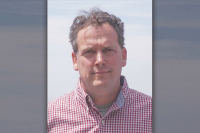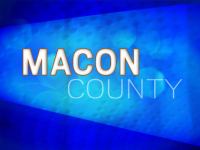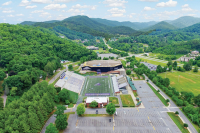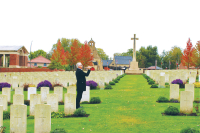State of the Arts: WCU holds art summit for WNC creative leaders
 In an effort to bring together the artistic hearts and minds from around Western North Carolina, the “LEAD:Arts” summit was hosted last week by Western Carolina University in Cullowhee.
In an effort to bring together the artistic hearts and minds from around Western North Carolina, the “LEAD:Arts” summit was hosted last week by Western Carolina University in Cullowhee.
“The arts and artists are essential elements for a healthy community,” said moderator George Brown, dean of WCU’s College of Fine and Performing Arts. “Art improves the quality of life. Artists make good neighbors. This conference will go beyond discussion of the role of arts in the community. Western Carolina University and Western North Carolina will come together through art to take action and foster a better tomorrow for the region.”
And go beyond it did. With dozens of art council directors, museum curators, studio artists and academic administrators in attendance, several WNC counties were represented, from Cherokee to Henderson, Buncombe to Macon, Haywood to Clay, and seemingly everywhere in-between.
“In my six years of service in the region, this is the first time a regional summit, specifically designed for arts administrators, practitioners, and supporters has ever been convened,” said Denise Drury, director of the Fine Art Museum at WCU. “This alone is a huge achievement. For our field, a meeting like this is oftentimes seen as a luxury of time that many of us can’t afford.”
And with the opportunity to compare notes and pick each other’s brains, Drury emphasized the critical importance of the conference.
“The fact that this summit was packed to the gills with colleagues wanting to connect and collaborate says a lot about the state of the arts,” Drury said. “The arts in WNC are at a tipping point. Our reputation for being an art, music and craft nexus is growing on a national scale. It’s time for us to come together and make a plan on how we can all work to capitalize on our collective successes to sustain and grow our current organizations and nurture the next generation of artists.”
Related Items
Drury’s sentiments were equally shared by other organizations around the area.
“Our region is known for music and arts, so that piece is in place,” said Angie Schwab, executive director of Folkmoot USA, the international music and dance festival based in Waynesville. “I think there is an opportunity for our industry to focus our resources on building a culture that understands the economic impact of arts and cultures, and that welcomes and nurtures arts organizations, arts and music education, and that focuses on arts entrepreneurships.”
Arriving mid-morning on March 17, attendees, many of which were meeting for the first time, were encouraged to sit at tables with those they didn’t know, as to truly get out of their comfort zone and to ultimately provoke their brainstorming potential.
“My hopes were that the arts organizations attending would network and find interesting ways to collaborate on ideas and projects,” said Claire Collins, executive director of the Jackson County Arts Council in Sylva. “It’s always interesting to see what other entities are doing in their counties and how they address issues regarding educating their communities on the importance of the arts.”
“As a newcomer to Western North Carolina, I wanted to meet colleagues from other arts organizations, to get an overview of the opportunities and challenges facing the sector and get involved,” added Teresa Osborn, executive director of The Bascom Center for the Visual Arts in Highlands.
Gathered around several roundtables, each group was asked to discuss and determine just what are the strengths, weaknesses, threats and solutions to the preservation and perpetuation of the arts in Western North Carolina.
“There were several good and useful issues looked at and identified as collectively important or important to individual art organizations represented, like a regional economic impact study,” said David Vowell, executive director of the Cherokee County Arts Council in Murphy. “I liked the frequent note that educating young people with the arts and educating communities and community leaders about the arts’ importance. I would love to see the latter educational need pursued with the intent of sharing known solutions or developing new and better solutions. I saw that as part of the nature of a meeting that is aimed at collective effort — regional strategies will tend to dominate, and in the long run the value of that bigger picture is undeniable.”
In terms of strengths, the groups noted the rich fabric of history and heritage in Western North Carolina, where music, writing and the visual arts tell the story of these mountains and those who reside proudly in them. Programs like the Junior Appalachian Musicians and Folkmoot were lauded, as was the mere notion of how Main Street USA in our backyards are made up of well-supported art walks, galleries, studios and craft co-ops.
“The arts are so incredibly vital to a quality of life, smart business and the health of a community. The arts teach us to appreciate beauty to make visible our thoughts, ideas and inspirations and to continually problem solve,” said Kari Rinn, director of Creative Arts at Haywood Community College in Clyde. “These are important life skills that apply to every aspect of community, family and business. The survival of the arts is paramount to our happiness and also our innovation.”
“What is remembered about civilizations is their art — visual, literary, musical,” added Osborn. “Throughout the ages, the arts are what has bound people together, and what has reflected the times. I have committed my professional life to doing what I can to ensure that the arts are brought to all, without barriers to access. When communities care about the arts, foster the arts, support the arts, there is an undeniable quality of life that exists.”
In terms of weaknesses, all fingers pointed back at the always-present elephant in the room — funding. With year-after-year cuts in local, state and federal art grants and tax exemptions, organizations are finding it harder and harder to financially keep their creative ships afloat.
“I had some specific issues I hoped to find resources for — how to persuade local government bodies to tangibly support the work of their local arts council, grant sources currently searching for programming entities to support, volunteer recruitment and retention methods,” Vowell said.
The groups did all agree that many strengths were also weaknesses, and vice versa. Where some communities have thriving arts councils, others don’t even have one to call home (like Swain County). And while some downtowns put a vested interest in the arts (festivals and gallery strolls), others have to get their local government’s teeth pulled to budge even an inch.
“In my thoughts, the arts flourish in pockets, pockets of high intensity art activity coupled with art resources,” Vowell said, noting the immensely popular John C. Campbell Folk School in Brasstown.
“The arts in WNC are amazing, visual and performing,” added Mary Adair Leslie, executive director of the Martin-Lipscomb Performing Arts Center in Highlands. “The arts continue to grow, despite economic transitions, because the artists and art advocates are so passionate.”
Threats hovered around bridging the gap between youth programming and older folks who are keeping the light on for a lot of these organizations. Of course, many of those people between ages 25 and 50 are raising families and pursuing careers, where time and money are foreground issues, but who will take over in the next generation? The question of how to engage younger generations, to encourage participation and perhaps volunteering, bounced around the discussion numerous times. Not to mention the importance of arts education in the school system.
“The arts are so important, where many studies show that exposure to the arts can help children creatively learn critical thinking and problem solving skills,” Collins said. “I can’t imagine a world without art, it makes everything so much more colorful and beautiful. What would we do without music, theater or art museums to visit? I think it is so important for children to be exposed to the arts. They are so imaginative and creative, having ways to express their imaginations and creativity is so important to their growth — art touches our lives in so many ways.”
“Though STEM (science, technology, engineering and mathematics) is often spoken of, creating STEAM by including arts in education is paramount to cultivating the next generation of creative thinkers,” said Lindsey Solomon, executive director of the Haywood County Arts Council in Waynesville. “The arts in our Haywood County community not only enhance quality of life for our residents, but they enhance tourism and drive sales for artists and arts businesses. However you approach the arts in our community, from the aesthetic, educational, or economic, the sum total of the power of the arts is huge.”
When asked for key issues to focus on and take away from the conference, “collaboration” and a “regional strategic plan” overtook the discussion. All agreed that county borders need to be erased, with healthy and stimulating cross-pollination between organizations pushed into the collective minds of any and all within the arts community.
“For instance, Folkmoot has a 40,000-square-foot building that has the potential to be a multi-stakeholder arts and culture center. To do this, we will need to build capacity, find grant funding, collaborative partners and make a concentrated effort to build an audience for the center,” Schwab said. “Our partners are likely to be the Haywood County Arts Council, the Haywood Community Band, Haywood Regional Arts Theatre (HART), Voices in the Laurel, HCC and WCU. Usually, the opportunity for shared funding is the driver for collaboration, but we need to get in front of the opportunity with clear purpose and a shared vision.”
“The concept of a regional strategic plan for the arts that truly represented the far western counties of the state west of Asheville resonated strongly with me,” added Drury. “A plan that would clearly articulate areas of need and set a course to tackle those needs within a specific timeline. It would focus the region in a way that all arts partners would be on the same page, so to speak. I imagine this plan would tackle many of the issues discussed at the summit such as communication among organizations and to our audiences, art education in and out of schools in WNC, and audience cultivation.”
With the conference coming to a close several hours later, one thing was for sure: the first step in getting any traction had already occurred — getting everyone in the Western North Carolina arts community together to discuss the “state of the arts.” Mission accomplished, and yet, the games have only begun in terms of what can and will happen as the synergy has now been put into motion between organizations, their goals, ideas and resources.
“I think the fact that the summit happened was important,” Osborn said. “But what will be of lasting importance is that we continue to convene, continue to discuss, continue to collaborate for the larger issues facing the arts — that will truly bring about lasting change.”
“The fact that so many of us see the same problems and are willing to discuss those challenges is very important. I think there is value in collective acknowledgement so that we can move forward together toward solutions,” Solomon added. “What I really took away from the summit is an even stronger commitment to partnership and collaboration. We all see the need and I think we all have the desire to work together, but it’s about figuring out the what and how. I look forward to continued conversation with those at the summit in the future.”
“Arts people are stronger together. Personally, I felt happy that the arts wasn’t marginalized and wasn’t a subheading to something else. That’s the way it is in most education and economic development conversations,” Schwab went on to say. “It was energizing to be around others who have the same goals and who have a similar values around creativity — we made a lot of progress.”









